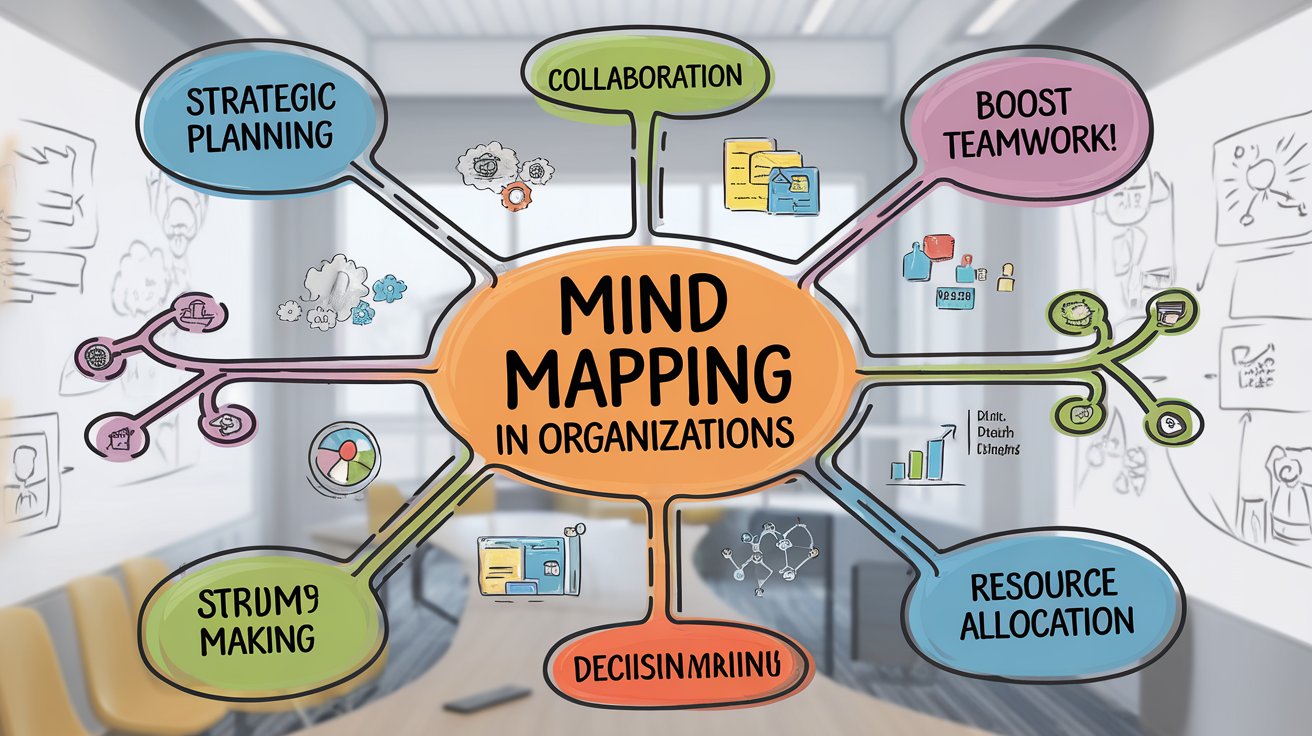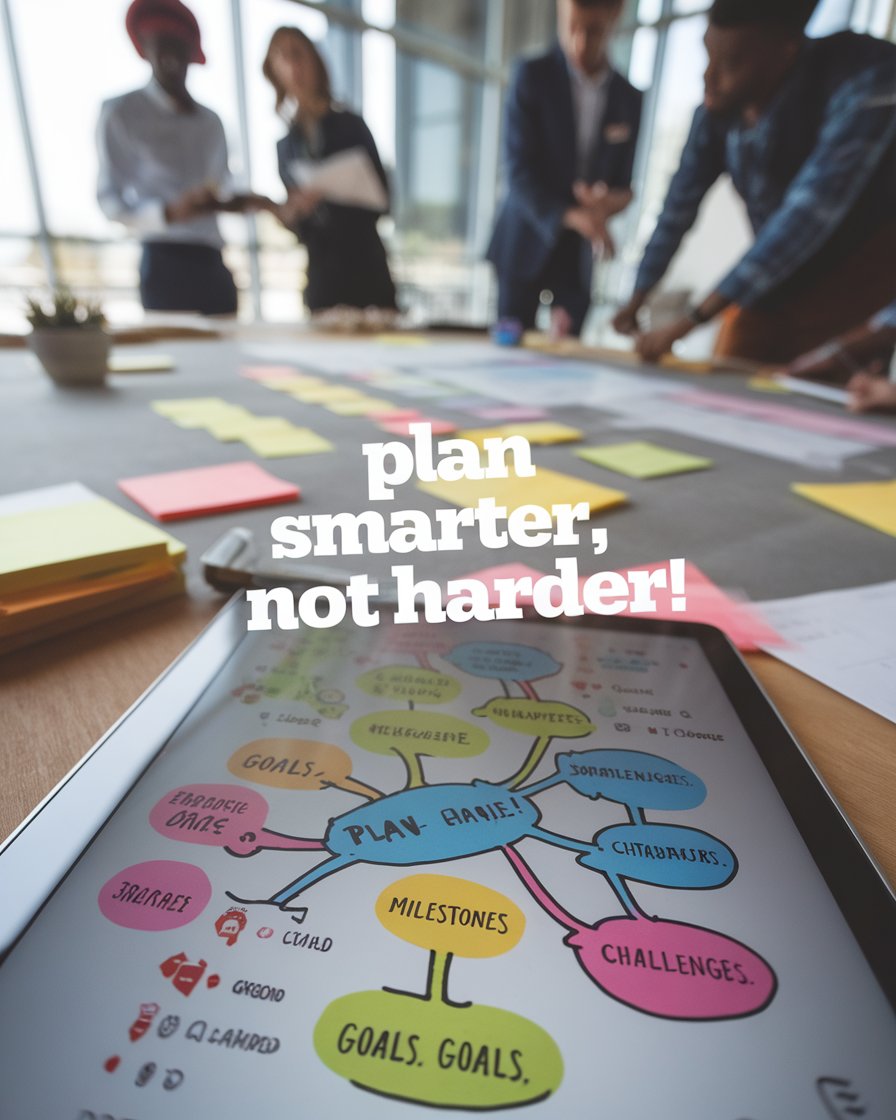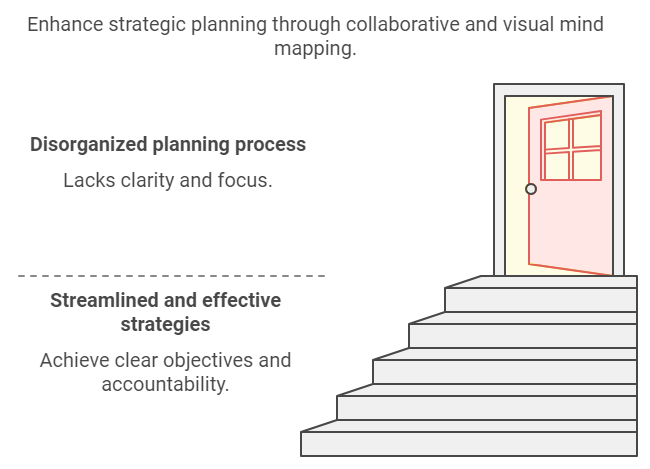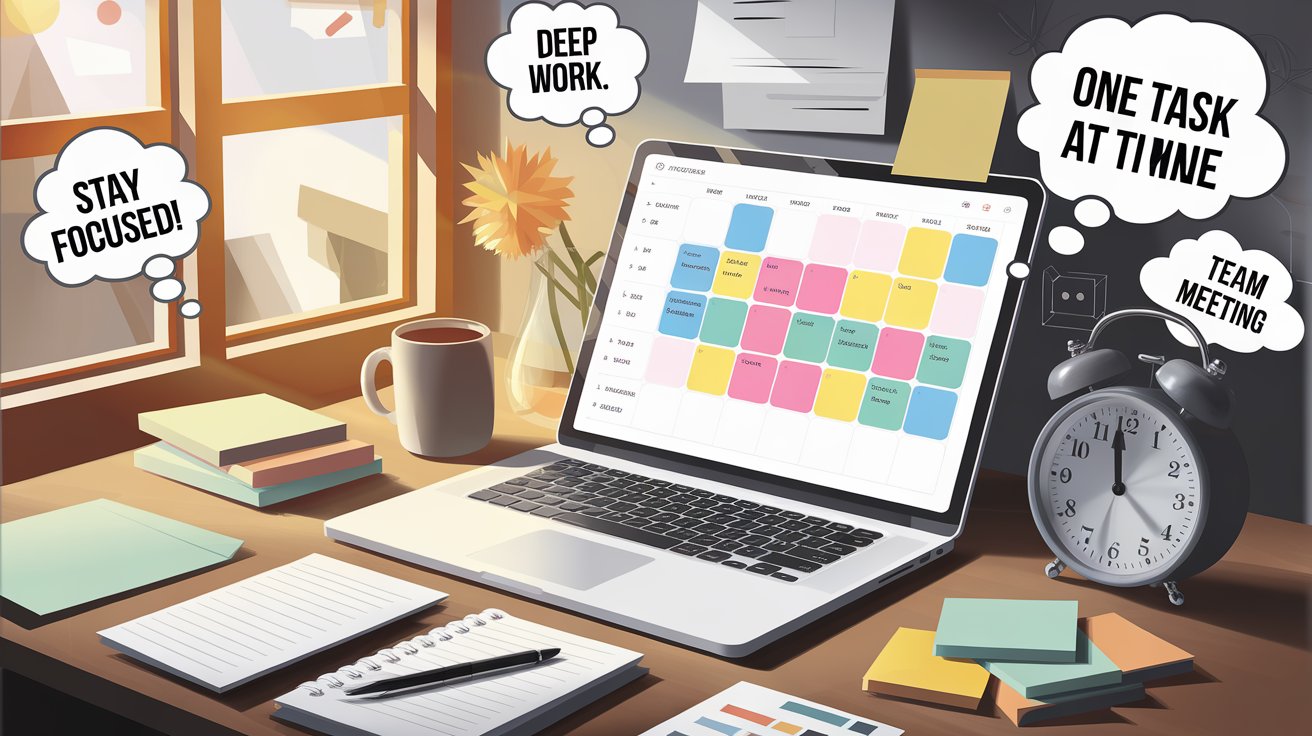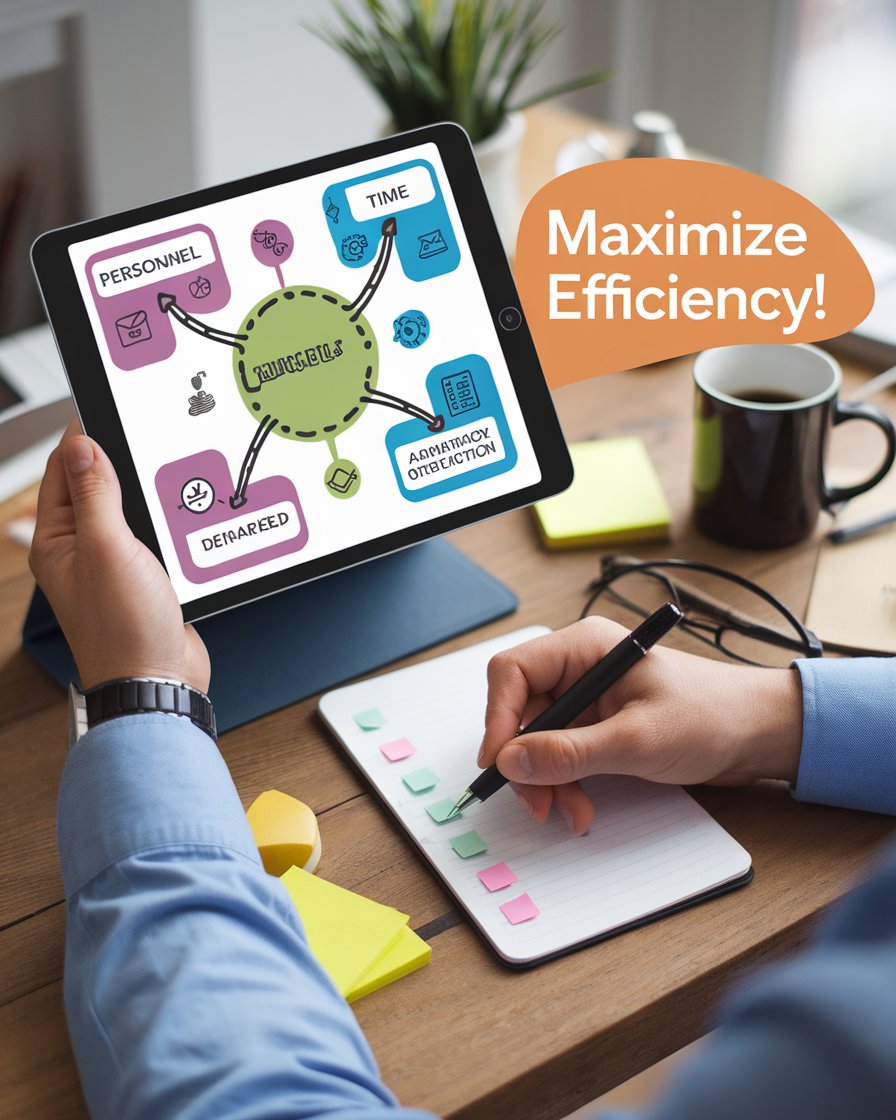Introduction
Mind mapping has become an essential tool for organizations aiming to streamline complex processes and protect their operational efficiency. This visual technique supports teams by organizing information around a central idea, enabling departments to visually break down intricate projects into clear, actionable steps. Whether it’s setting project goals, managing resources, or enhancing collaboration, mind mapping offers an adaptable and engaging way to visualize strategies. Organizations can use mind mapping templates and mind map software to create structured, intuitive representations that simplify understanding and help align teams with the organization’s broader objectives.
By using mind maps, teams can focus on key insights, ensuring that each decision supports organizational goals. This approach also enhances decision-making, helping organizations quickly assess data and respond effectively to shifting circumstances. With benefits like improved communication, real-time adaptability, and efficient resource allocation, mind mapping plays a vital role in protecting and strengthening the organization’s strategic and operational goals.
Key Takeaways
- Mind mapping simplifies complex organizational strategies into visual, actionable steps.
- Using templates and software helps align team efforts with the organization’s objectives.
- Visual cues in mind maps enhance communication and reduce misunderstandings.
- Customizable mind maps allow for efficient resource allocation based on specific project needs.
- Mind mapping supports data-driven decision-making by organizing information effectively.
- Collaborative digital mind maps foster teamwork, especially in remote settings.
Leveraging Mind Mapping Templates for Strategic Planning
Using mind mapping templates simplifies strategic planning by breaking down complex projects into visual representations. These templates enable organizations to establish a central idea, connecting subtopics and critical tasks that need attention. With structured visual cues, teams can identify potential challenges and roadblocks early in the process. Mind mapping templates support idea generation, allowing teams to brainstorm and ideate while remaining anchored to the organization’s core objectives. This approach aids in translating broad strategies into manageable tasks, ensuring team members understand how their efforts contribute to overall goals. Mind mapping templates foster clarity and provide an efficient, accessible framework for streamlining various planning stages, making strategic planning more achievable and organized.
Customizing Mind Mapping Templates for Project Clarity
Customizing mind mapping templates allows teams to adapt visual layouts to fit specific project needs, enhancing clarity and comprehension. By tailoring templates, teams can highlight core objectives, connect related tasks, and break down complex projects into manageable steps. This customized approach helps visually prioritize tasks, identify dependencies, and uncover potential risks early in the planning phase. With options to add unique elements, like icons and color-coded branches, teams create a mind map that reflects the project’s unique requirements. Using customized templates improves project focus, giving each member a clear view of their contributions toward the organization’s goals, ultimately strengthening planning and execution.
Using Visual Cues for Strategic Alignment in Mind Mapping
Incorporating visual cues like colors, icons, and branching patterns within mind mapping templates enhances strategic alignment across the team. Visual elements enable team members to quickly understand the significance of each task, seeing at a glance where priorities lie and how their roles interconnect. By visually organizing tasks around a central concept, teams ensure that project goals are clear and accessible to all. Visual cues aid comprehension and help prevent misunderstandings, promoting a cohesive, organized approach to achieving strategic goals. This approach strengthens communication and keeps the team focused on critical project outcomes, supporting smooth collaboration from start to finish.
Strategies for Effective Mind Mapping in Strategic Planning
1. Define a Clear Central Idea
Start with a central topic that reflects the organization’s main objective for the project. By establishing a clear central idea, teams can easily branch out subtopics and tasks, ensuring all actions connect back to the core goal.
2. Use Visual Cues to Prioritize Tasks
Incorporate color-coding, icons, and symbols to differentiate task urgency and priority. Visual cues help teams instantly recognize high-impact tasks, enhancing focus on what’s most essential.
3. Keep Mind Maps Simple and Scalable
Begin with a simple structure and add complexity only when necessary. This approach ensures that mind maps remain easy to interpret, even as projects grow in scope.
4. Encourage Team Input for Comprehensive Planning
Invite team members to contribute to the mind map. Their insights can help uncover potential challenges and create a more robust, inclusive strategy.
5. Set Milestones for Tracking Progress
Include key milestones within the mind map to monitor progress over time. This structured approach keeps the team aligned on deadlines and project goals, promoting accountability.
Boosting Collaboration with Visual Mind Mapping Tools
Mind mapping tools are powerful aids for enhancing collaboration within teams, transforming abstract ideas into visual, organized formats that everyone can interpret. By using tools like mind map software, teams can create a shared visual representation of project elements and individual responsibilities. This approach allows for open communication, enabling team members to share insights and voice concerns directly on a centralized platform. Visual mind mapping supports real-time adaptation, allowing teams to adjust tasks based on feedback and project progress. Through structured diagrams and easily customizable elements, these tools promote accountability and ensure that everyone remains aligned with organizational objectives. Overall, mind mapping tools create a collaborative, inclusive workspace that aligns team efforts with strategic goals.
Enhancing Team Communication Through Mind Mapping Software
Mind mapping software significantly enhances team communication by providing a shared platform where ideas and updates are visually organized. Using tools like diagrams and visual representations, teams can express and record ideas in real-time, making it easy for all members to track progress and identify their roles. Mind mapping software supports clear information exchange, allowing everyone to see how individual tasks contribute to the project’s overall success. This visual representation enables transparency, reduces miscommunication, and strengthens collaboration, as team members feel more engaged in the shared goals of the organization. It is a dynamic way to ensure all voices are heard and included.
Facilitating Remote Collaboration with Digital Mind Maps
Digital mind maps are essential for facilitating collaboration, especially for remote teams. By centralizing ideas and tasks on a digital platform, team members can access project information from anywhere, keeping everyone connected regardless of location. Digital mind maps allow updates, adjustments, and comments in real-time, ensuring team members stay aligned and informed. This flexibility empowers remote employees to contribute meaningfully, bridging physical distance and enhancing productivity. The collaborative nature of digital mind maps fosters inclusivity and enables remote team members to collaborate as effectively as those in the same location, helping maintain a strong organizational bond.
Case Study: Improving Collaboration and Efficiency with Digital Mind Mapping
A mid-sized consulting firm sought to enhance collaboration across its teams, especially as many employees shifted to remote work. The firm implemented a digital mind mapping tool to create a centralized visual platform where team members could outline project goals, assign tasks, and track progress in real-time. Using customized mind maps, they categorized each project by milestones, resources, and individual responsibilities, making it easy for remote and in-office staff to stay connected.
This approach enabled teams to contribute ideas, access updates instantly, and understand their roles within the broader project structure. The digital platform’s visual elements, like color-coded branches and icons, helped team members identify high-priority tasks and deadlines at a glance. By streamlining communication and reducing confusion, the firm improved project completion rates and employee engagement, strengthening both efficiency and team morale.
Enhancing Decision-Making through Organized Data Representation
Mind mapping is an effective technique for supporting decision-making by visually organizing complex data, making it accessible and actionable for decision-makers. By integrating various data points, such as customer feedback and performance metrics, into a mind map, decision-makers can evaluate relationships and connections that may otherwise be overlooked. This method encourages a comprehensive view of both opportunities and potential risks, empowering leaders to make informed choices. Visual data organization allows quick identification of critical insights, enhancing the strategic quality of decisions. Utilizing symbols, icons, and colors to represent different data types, mind maps provide a streamlined way to understand and assess data for improved decision-making.
Integrating Market Insights into Mind Mapping for Informed Decisions
Mind mapping is an effective way to integrate market insights, providing decision-makers with a comprehensive visual of critical data points. By using icons, symbols, and color-coded branches, mind maps help in categorizing and prioritizing information, such as customer feedback and competitive analysis. This organized approach allows leaders to assess relationships and potential impacts before making decisions. By visually connecting data, mind maps offer clarity and aid in identifying actionable insights. This enables decision-makers to base their strategies on accurate, organized information, resulting in more reliable and effective business decisions.
Utilizing Mind Maps for Cross-Departmental Data Analysis
Mind maps facilitate cross-departmental data analysis by bringing together diverse data points from different areas of the organization into a single visual structure. Each department’s insights, such as sales figures or customer service metrics, can be represented as branches, making it easy to identify correlations and trends. This holistic view aids in making more balanced decisions, as leaders can see how each department’s data influences organizational goals. By visually mapping departmental data, mind maps simplify complex information, allowing leaders to make data-driven decisions that align with the organization’s overall objectives.
“The human brain works best when information is organized visually; it’s how we naturally process and connect ideas.” – Tony Buzan, creator of Mind Mapping
Optimizing Resource Allocation with Custom Mind Mapping Techniques
Custom mind mapping techniques offer a practical approach to optimizing resource allocation, focusing efforts where they matter most. By visually organizing projects into segments based on available resources, organizations can prioritize and allocate personnel, time, and budget efficiently. Mind maps provide a structured view of how resources connect to various project aspects, helping teams identify resource gaps and reallocate when necessary. Tailored to fit specific project needs, these visual tools ensure resources are assigned to tasks with the highest impact on organizational goals. Through this focused approach, mind mapping supports efficient resource use, reducing wastage and improving project outcomes.
Mapping Project Resources for Efficient Allocation
Mind maps provide a practical method for allocating project resources efficiently by visually representing how personnel, time, and budget align with project goals. By breaking down a project into individual tasks and mapping resources to each, teams can see where additional support is needed or where there may be an excess. This visual representation helps prioritize tasks according to resource availability, allowing for better allocation and minimizing potential bottlenecks. Mind mapping enables project managers to identify and address resource gaps quickly, ensuring that critical tasks have the support they need to be successful.
Customizing Mind Maps to Address Specific Resource Needs
Customizing mind maps to reflect unique resource requirements allows teams to create a more precise allocation plan that supports project goals. By organizing tasks and resources around a central concept, teams can identify specific needs, such as specialized skills or increased time for complex tasks. Customization options, like color-coded branches and icons, allow teams to visually distinguish priority tasks from secondary ones, enhancing focus on essential resources. This approach ensures that teams utilize resources efficiently, adapting mind maps as needs evolve, ultimately contributing to smoother project execution and maximizing overall productivity.
Conclusion
Incorporating mind mapping into an organization’s workflow brings substantial benefits, from enhanced collaboration to streamlined decision-making processes. This visual tool allows teams to organize their ideas clearly and identify relationships between tasks and resources, ensuring that each element aligns with the organization’s core objectives. With options to customize mind maps, teams can address unique project requirements, making the process of goal-setting and problem-solving more effective.
Mind mapping supports both individual and team productivity by providing a structured format that simplifies complex concepts and processes. As a tool for protecting organizational efficiency, mind mapping not only improves strategic alignment but also fosters a collaborative environment where innovative solutions can thrive. By visually organizing information, mind mapping empowers organizations to stay focused, resilient, and responsive to changing demands.


